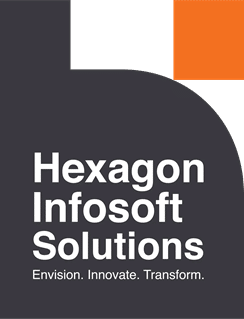Staying abreast of AI trends and advancements
Artificial intelligence (AI) technology is fast dovetailing into the commercial space. Artificial Intelligence (AI) technology disrupts the industry and reconceives the way things should be done, from the creation of content to the production floor.
There’s a conversation like this at every trade event. Just about every company has some reference to it in one form or another in its marketing strategy. It is driving innovation in a way that even just a few short years ago would surely have been unforeseen. The reason is that it can be a profitable deal with Artificial Intelligence in Business.
Planning for scalability and flexibility
AI-powered content management systems and website creation for Enterprise AI Implementation
These days, AI is assisting in the automation of various web development processes, ranging from back-end features to front-end design. AI elements are also in the process of being integrated to enhance security, perfect the design and functionality of a site, and make workflows easier inside Content Management Systems. Here are a few instances of how web development takes advantage of these AI trends:
“Integrated generative AI for content management systems”
In the creative arts, AI has come a long way. According to computer scientists, 2024 has truly been a fantastic year for boosting NLP models and improving picture generators.
Since those first releases—including DALL-E in January 2021 and all the others in 2022—tools such as DALL·E, Midjourney, Stable Diffusion, and ChatGPT have improved so dramatically that businesses can now generate instantly usable photos, graphics, marketing copy, and blog content.
Optimization of load time
A user-friendly website means one that is fast. Websites that are user-friendly open fast and increase engagement and conversion. If your website has a slow speed and takes more than around four seconds to load, there is something wrong that you need to take care of immediately.
Manually identifying and correcting the website to enhance speed is hard, and most of the time, you have to hire an expert for that. Luckily, artificial intelligence solutions can lend their help by pinpointing the flaws of data analysis and machine-learning algorithms and performance bottlenecks in a website, hence saving time and money whenever you need it.
“Artificial intelligence-driven scalability and its impact on the sustainability and valuation of traditional firms”
As the integration of Artificial Intelligence continues to increase and become part of daily operations, “AI Scalability” and “AI Flexibility” should be considered by any organization. Continual updating of “AI Trends” and reassessing the AI strategy will let the AI projects scale up and evolve with new requirements.
Organizing for Scalability in AI
AI scalability defines the capacity of an AI system to grow its user base, data, or any other computing demand without proportionate efficiency loss. Effectively planning concerning scaling assures that AI systems are capable of expansion and can satisfy the needs of a company.
- Scaling Up: At design, consider the extensibility of AI solutions. This means choosing architectures and technologies that support additional datasets and complex algorithms later on as the system grows.
- Modularity of Components: For this, the modular components can be scaled or upgraded separately, independently. In such a case, improvement in focus and changes are possible without systemic instability.
Providing AI Flexibility
“AI Flexibility” means the ease with which the addition of new technologies or procedures or the adjustments required can be made about changing requirements. Adaptability is important if one is to stay competitive in the fast-changing shores of technology.
- Utilizing Agile approaches: In creating flexible AI solutions, Agile development methodologies will be adopted. Agile development methodologies promote iterative development and allow for fast adaptation to changes in requirements to be able to incrementally improve and respond rapidly to new needs.
- Modular Design: Like scalability, modular design provides flexibility. In this regard, the replaceable or upgradable modular pieces make it easy for the AI system to adapt quickly to new technologies or changed business needs.
Continuously reassessing and adjusting your AI roadmap
“AI Roadmap Reassessment“: the periodic reconsideration of the AI strategy, which may be necessary to ensure it stays in line with corporate objectives, while also effectively meshing with new developments brought within the domain.
- Embrace New AI Trends: Be able to understand “AI Trends“and developments in the industry. New methods and technology may either open up new opportunities or require adjustment of the AI plan.
- Engage the Parties: The reassessment should involve major stakeholders to solicit comments and viewpoints. This AI Execution guarantees the AI roadmap meets all the needs of departments and helps to pinpoint areas that need improvement.
Conclusion
Long-term “AI Scalability” and “AI Flexibility” require careful planning to ensure maximum return from the AI projects. Such a flexible methodology, creation of scalable solutions, and periodic reviews of the “AI Roadmap” will assure that the organization’s AI systems can continue their operations effectively in the face of any future changes. Organizations will thrive in a dynamic and competitive environment only when these are keyed up on “AI Trends” and take a lead in modifying their AI strategy.


